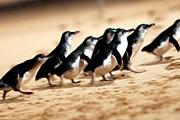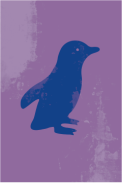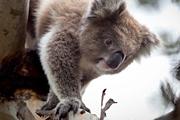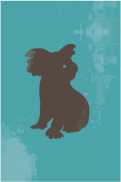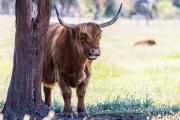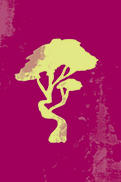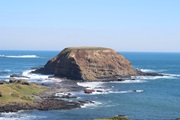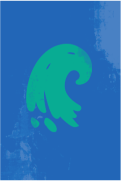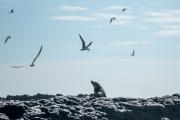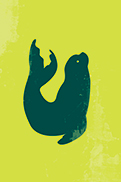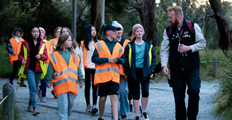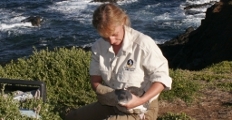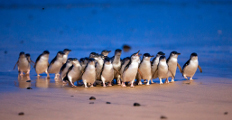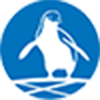Know Your Nature Parks - Spring 2025
Spring on Phillip Island (Milawul) is a symphony of life and movement. The return of short-tailed shearwaters is one of nature’s most awe-inspiring migrations. Seeing them streak across the sky at sunset is unforgettable. With the arrival of waders like sandpipers, curlews, and godwits, the coastal shorelines and wetlands become a bustling hub of activity. Each species has its own rhythm and role in the ecosystem, and spring is when it all comes alive.
In the skies – Birdlife
Hooded plovers
The 2025–26 hooded plover breeding season on Phillip Island (Milawul) has officially begun! Hooded plovers are forming partnerships and searching for nesting sites. Our team monitors beaches and dunes, particularly along high tide lines, to assist these threatened birds by setting up signs and roped-off areas for protection.
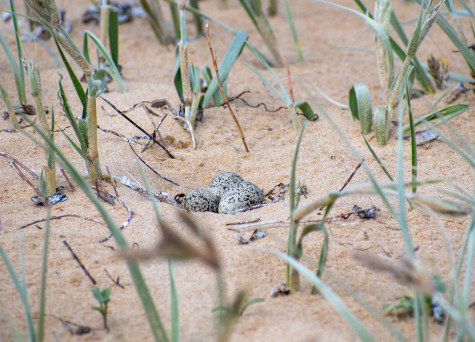
Image 1: Hooded plover nest with eggs.
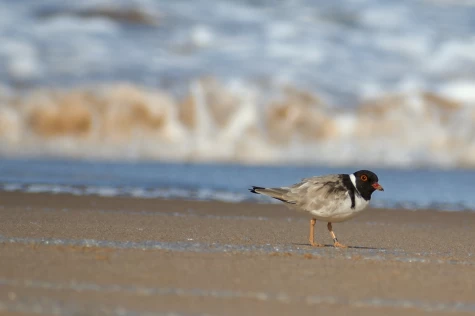
Image 2: Hooded plover on the shore.
Fairy terns
Our team will monitor the Critically Endangered fairy tern on Phillip Island (Milawul) this spring. Rejuvenation of their habitat has taken place through the partnership of the Bunurong Land Council Aboriginal Corporation and with the support of the Department of Environment, Land, Water and Planning Nature Fund, the Penguin Foundation and Melbourne Water. Fairy terns nest above the high-tide mark on sandy beaches, laying one or two speckled eggs in shallow scrapes.
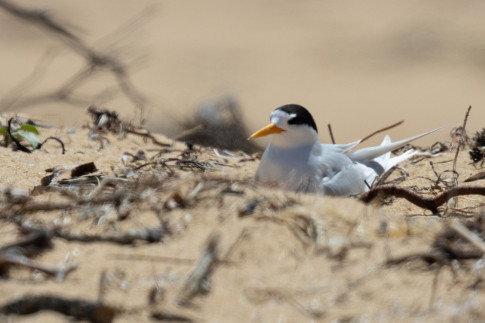
Image 3: Fairy tern sitting on scrape
Short-tailed shearwaters
Short-tailed shearwaters return from their Aleutian Island feeding grounds and can be seen shearing above the waterline at sunset. While walking, be mindful to stick to tracks in the dunes to avoid disturbing their burrows.
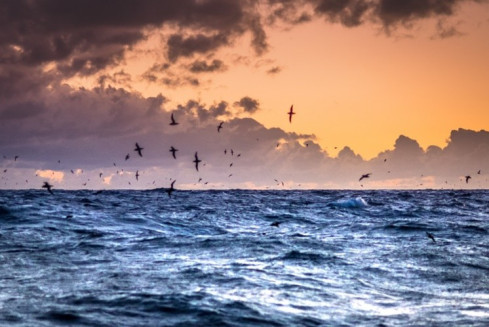
Image 4: Short-tailed shearwaters at sunset
On our shores and in the water
Little penguins
Little penguins are the smallest penguin species in the world, and they’re full of charm and energy. Spring on Milawul marks a bustling season for these adorable seabirds as the breeding season kicks off. During this active period adults return to their burrows dug into sand dunes or under vegetation, working tirelessly to prepare them for egg laying. Typically, each pair lays two eggs, and both parents take turns incubating them. Once hatched, chicks are fed regurgitated fish by their parents until they’re ready to fledge.
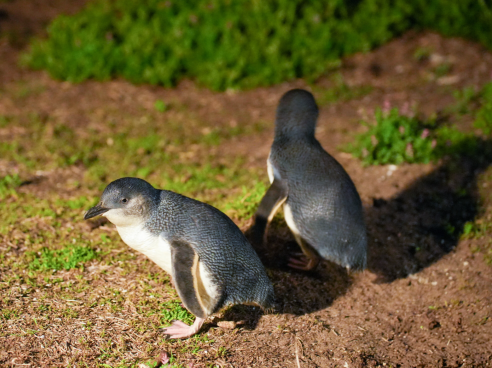
Image 5: Little penguins returning to their burrow
Seals
Australian fur seal pups have fully moulted into their waterproof two-layered coat and are starting to explore the waters around Seal Rocks, venturing further to play and explore as they prepare for weaning and having to find their own food.
Pregnant adult females are starting to ‘show’ and huge bull fur seals are visiting to check-in before the pup births and breeding season begins in November.
If you venture out to Seal Rocks this spring in your watercraft, remember to stay 60 m away for a recreational boat and 260 m away for a jet ski.
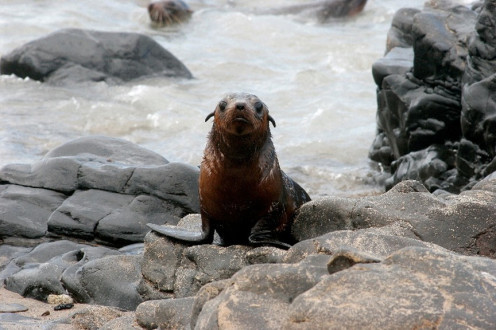
Image 6: Australian fur seal pup
On the ground with threatened species
Bush stone-curlews
Phillip Island Nature Parks started releasing curlews from captivity in August 2024 as part a carefully monitored trial with further birds released in April this year. In September another five birds were released, this time from captivity at the Koala Conservation Reserve, with some of our dedicated volunteers on hand to help.
These curlews have been housed in two large aviaries where visitors could view and learn about the species and their hope for recovery on the island. They are now being given the opportunity to explore the wild of Phillip Island (Milawul).
The Curlew Custodians volunteer role was created in 2023 to support the provision of care and feeding of the captive birds and create awareness and education for the species. Since the program started, we have had 14 volunteers sign up as Curlew Custodians and they have contributed over 1,100 hours to caring for these charismatic and much-loved birds.
Researchers expect the newly released birds will take time to adjust to the wild and they will be vulnerable whilst settling into the island environment.
The birds are fitted with tiny GPS-tracking backpacks and identification bands so researchers can monitor their survival, habitat use, movement patterns, and reproductive success. The study is a collaboration between the Nature Parks, Odonata Foundation and The Australian National University in hopes to improve the long-term viability of the bush stone-curlew in south-eastern Australia.
We are so grateful for the ongoing support from the community for the trial reintroduction of Critically Endangered bush stone-curlews to the island.
Here’s how you can help support the curlews:
- Slow down when driving - dusk to dawn is when birds are most active - remember that most of the birds can’t fly yet.
- Keep dogs on a leash and cats contained at all times.
- Leave fallen logs on the ground for habitat.
- Report sightings at iNaturalist or via email to community@penguins.org.au
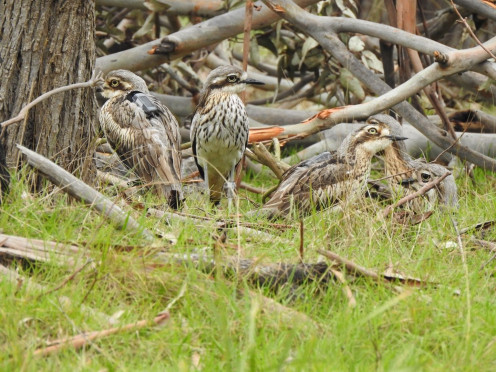
Image 7: Bush stone-curlews in the wild with GPS tracking backpacks
Eastern barred bandicoots
Phillip Island Nature Parks recently celebrated the 10-year anniversary of the successful translocation of Eastern barred bandicoots to Churchill Island, a move that has brought the species back from the brink of extinction.
The Eastern barred bandicoot was first introduced to Churchill Island in 2015. Prior to that, the species was officially classified as 'Extinct in the Wild' having been largely wiped out on mainland Australia and only surviving within three fenced predator proof reserves in Victoria. The diminutive marsupials thrive in grasslands and are vulnerable to land clearing and predation by feral foxes and cats.
The population on Churchill Island is estimated to be around 150 individuals, and they have now spread into residential areas on Phillip Island (Milawul), including Ventnor to Newhaven and from Smiths Beach to Rhyll.
The initial release reassured our conservation efforts and following that success, Eastern barred bandicoots were relocated to the Summerland Peninsula on Phillip Island after it was declared fox free in 2017. However, we cannot be complacent as both feral and domestic cats still pose a significant risk for this species through predation and the spread of toxoplasmosis.
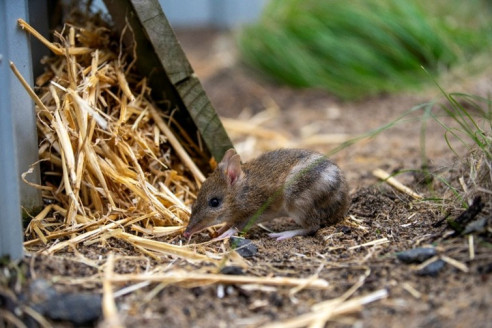
Image 8: An Eastern barred bandicoot in care at the Wildlife Rehabilitation Centre
New research by Phillip Island Nature Parks and the University of Melbourne revealed just how deadly toxoplasmosis is to Eastern barred bandicoots.
Toxoplasmosis is a disease caused by a parasite that is only spread through the environment by domestic and feral cats. Results indicate that Eastern barred bandicoots are highly susceptible to toxoplasmosis when they share a landscape with cats and this disease can have significant impacts on bandicoot populations.
Despite the impacts of toxoplasmosis, moving the Eastern barred bandicoots to fox free island safe havens, like Churchill Island, French Island, and Phillip Island has given them a lifeline.
The translocation program has been coordinated between Phillip Island Nature Parks, Odonata Foundation, Zoos Victoria, the Department of Energy, Environment and Climate Action, Parks Victoria, The University of Melbourne, National Trust of Australia and Conservation Volunteers Australia. Community can contribute to tracking their spread by reporting sightings on our Bandicoot sightings portal or via email to community@penguins.org.au
In the trees
Koalas
A three-year-old male koala named Obi-Wan has joined the reserve on loan from Ballarat Wildlife Park, adding to the genetic diversity.
To enhance habitat 300 Eucalyptus viminalis pryoriana trees have been planted in the northern plantation to support future koala feeding needs and long-term sustainability.
A wild female koala from South Gippsland has undergone care and recovery in the Koala Conservation Reserves critical care pens, highlighting the reserve’s role in wildlife rescue and rehabilitation.
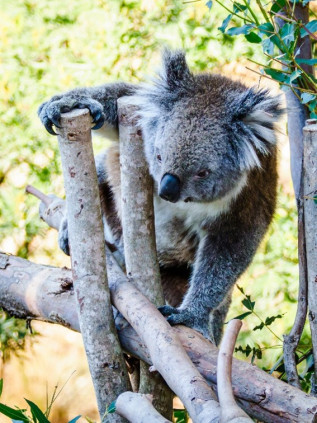
Image 9: Koala on the move at the Koala Conservation Reserve
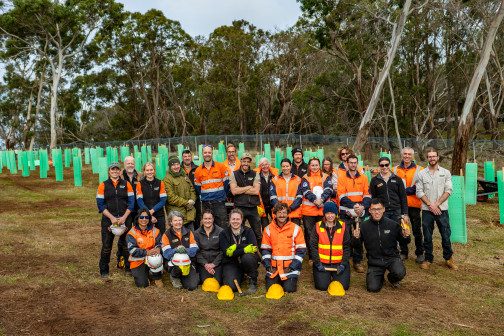
Image 10: The Nature Parks team planting at the Koala Conservation Reserve northern plantation
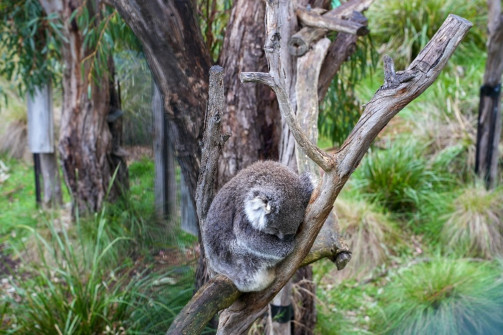
Image 11: Koala resting at the Koala Conservation Reserve
Reserves
The Nature Parks dedicated Reserves Rangers continue to scale the cliffs of Phillip Island (Milawul) removing the notorious weed African boxthorn. On their last few missions, the team have been at Pyramid Rock and have removed all bushes from this section of coastline. A highly skilled team continuing a near 30-year legacy of removing this weed of national significance.
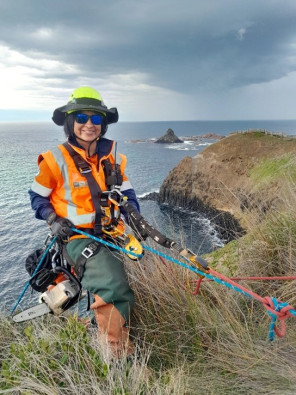
Image 12: Ranger Blair scaling the cliffs at Pyramid Rock
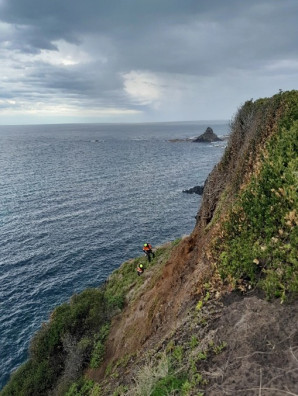
Image 13: Reserves Rangers removing African boxthorn
Wildlife Rehabilitation Centre
Standards of Care for Seabirds were developed from a partnership with Zoos Victoria to ensure that we are aligned with best practice and global standards. Having been implemented in our Wildlife Rehabilitation Centre, these new standards will ensure that we continue to seek knowledge and process improvement for the ongoing rehabilitation of seabirds and species that are cared for in the centre.
The ‘Passive Disease Risk’ project in collaboration with Melbourne University aims to establish a data bank of disease risk to little penguins and the project has completed its first year! Samples will be collected from deceased little penguins to analyse diseases prevalent in the species. We have just started our second year of this three-year project and so far, have sent a total of 41 little penguins.
With the arrival of spring, baby birds are on the move! As they leave the nest, they may need to spend some time on the ground to help develop. If you see a baby bird on the ground, please don’t pick it up! Keep your distance and observe from afar, the parents are likely nearby and may swoop if you get too close. If you are concerned the chick has injuries or has been abandoned, please seek advice from Wildlife Victoria on 03 8400 7300.
Summer is just around the corner and water is becoming scarcer for wildlife. Consider leaving a shallow dish of water in your garden. Be sure to place a stick in the water to provide an escape route for any creatures that might get stuck. Remember to make it accessible for echidnas and bandicoots as well.
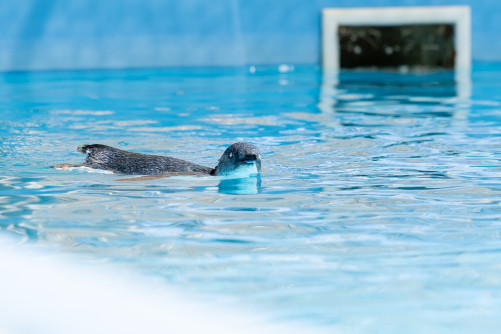
Image 14: A little penguin completes a swim test while in care
For the locals
Infrastructure projects
Forrest Caves
The Forrest Caves beach access has been upgraded to improve safety for beachgoers. Improvements include a reconfiguration of stairs and landings to the north and south stairway, replacement of deteriorating timbers and fixings, and installation of non-slip materials.
The Nature Parks construction team, together with local contractors delivered the project which was undertaken in several stages, and we extend thanks to the local community and beachgoers for their patience during the required closures.
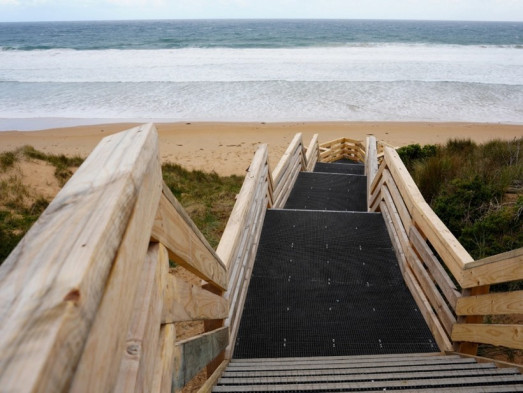
Image 15: Forrest Caves beach access is now open
Rhyll Inlet
Upgrades to boardwalks and viewing platforms between Conservation Hill and McIlwraith Road are planned from October to December, excluding school holiday periods. The boardwalk lookout, previously closed due to disrepair, will be removed permanently due to the high environmental impact it has in this sensitive environment. There will be staged closures of individual structures, but the main Cowes - Rhyll shared trail between Conservation Hill and McIlwraith Rd will remain open.
These works will create an improved nature experience for trail users, encouraging visitors to explore the Rhyll area and improving access to a lesser-known part of Milawul.
For more information about the project, please visit Infrastructure Projects or email community@penguins.org.au
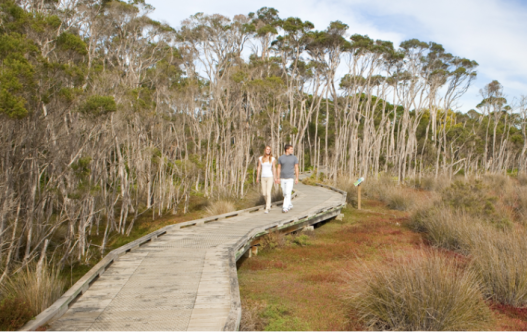
Image 16: Rhyll Inlet boardwalk
Keeping wildlife wild
The greatest thing you can do for wildlife is to keep it wild. Always maintain a safe distance and remember how fortunate we are to share our beautiful island home with them.
Take care when driving on Phillip Island especially at dawn, dusk and at night when wildlife is most active. To report injured wildlife, call Wildlife Victoria on (03) 8400 7300.
For more information on living with wildlife please visit wildlife.vic.gov.au
We’d love to see your images of the Nature Parks
Don't forget to share your images of the Nature Parks with us by using our hashtag #PhillipIslandNP





